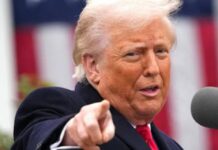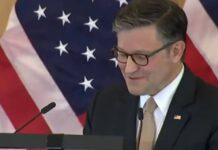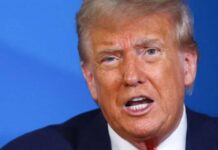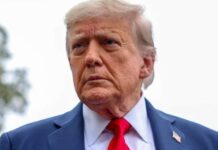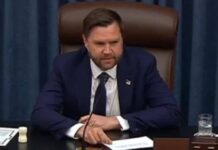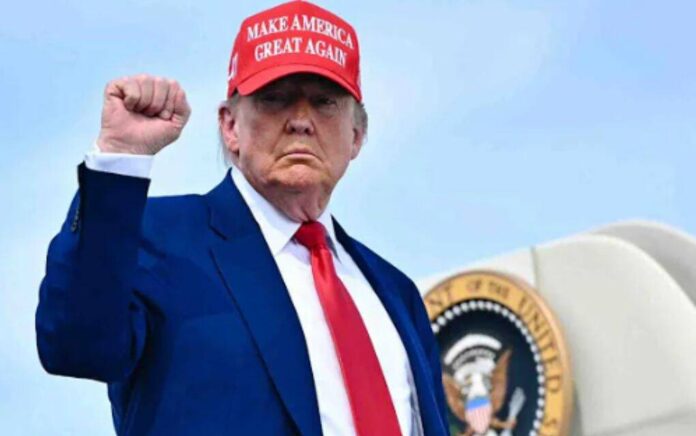
Donald Trump is feeling himself right now. He is on a roll.
That’s why President Trump just played a super risky 4D chess move and is calling anyone of his enemies to call his bluff.
Trump Sets Global Trade Rules with Tariff Strategy
President Donald Trump is approaching international trade with a new strategy, leveraging tariffs to assert American dominance and dictate terms to trading partners worldwide. With a self-imposed 90-day deadline to renegotiate deals nearing its July 9 end, Trump’s administration is sending a clear message: the United States will play by its own rules, prioritizing American interests with unwavering resolve.
Trump’s approach is marked by flexibility and unpredictability, keeping global markets on edge. “We can do whatever we want. We could extend it, we could make it shorter. I’d like to make it shorter,” Trump declared from the Oval Office on Friday. “I’d like to just send letters out to everyone ‘Congratulations, you’re paying 25%.’” His words encapsulate a bold vision to overhaul global trade, using tariffs as a tool to secure competitive advantages for the U.S.
In April, Trump announced reciprocal tariffs on nearly every nation trading with the U.S., only to pause them for 90 days to allow negotiations. So far, the strategy has yielded a limited trade pact with the United Kingdom and a trade truce with China. These deals serve as a blueprint for others, with Commerce Secretary Howard Lutnick hinting at more to come. “We’re going to do top 10 deals, put them in the right category, and then these other countries will fit behind,” Lutnick told Bloomberg, signaling the U.S. is close to finalizing an agreement with India and has made an offer to the European Union.
The abrupt halt of trade talks with Canada clearly demonstrates Trump’s willingness to walk away when he wants. On Friday, he terminated discussions, citing Canada’s digital services tax on American technology companies as a “direct and blatant attack” on the U.S. “We have just been informed that Canada, a very difficult Country to TRADE with, including the fact that they have charged our Farmers as much as 400% Tariffs, for years, on Dairy Products, has just announced that they are putting a Digital Services Tax on our American Technology Companies,” Trump wrote on Truth Social. He promised to inform Canada of their new tariff rates within seven days.
Canada, a critical U.S. trading partner, accounted for $762.1 billion in goods trade in 2024, with $349.4 billion in U.S. exports and $412.7 billion in imports, according to the Office of the U.S. Trade Representative. Services trade added $140.3 billion in 2023, with a U.S. surplus of $31.7 billion. Despite this deep economic tie, Trump’s administration views Canada’s policies, like the digital services tax mimicking an EU proposal, as unacceptable challenges to American interests.
The President’s tariff strategy extends beyond Canada. Since January, Trump imposed 25% tariffs on Canada and Mexico for issues related to fentanyl and migration, later refining these to target goods outside the United States-Mexico-Canada Agreement (USMCA). Additional measures include a 10% tariff on non-USMCA compliant potash and energy products, and a 50% tariff on aluminum and steel imports effective since June 4. A 25% tariff on foreign-made cars and trucks further reinforces Trump’s commitment to protecting American industries.
Canada’s leadership has struggled to respond. Prime Minister Mark Carney, exiting his office on Friday, emphasized ongoing negotiations in Canada’s best interests: “These are very complex negotiations and we are going to continue them in the best interests of Canadians.” Yet, Trump’s decision to pause talks highlights a fundamental clash. At the G7 Summit in Kananaskis, Trump noted, “It’s not so much holding up, I think we have different concepts, I have a tariff concept, Mark has a different concept, which is some people like, but we’re going to see if we can get to the bottom of it today.”
The tariffs have strained U.S.-Canada relations, impacting border cities and frustrating Canadian officials and residents. Trump’s provocative suggestion that Canada become the U.S.’s 51st state, coupled with his past references to former Prime Minister Justin Trudeau as “governor,” adds a layer of diplomatic tension. These moves project confidence in America’s ability to dictate terms, even to its closest neighbors.
Trump’s trade policy is a calculated gamble to reset global economic dynamics. By imposing tariffs and setting flexible deadlines, he keeps trading partners guessing, forcing them to negotiate on America’s terms. The 90-day window, which Trump suggested could be shortened or extended, exemplifies this unpredictability, ensuring the U.S. maintains the upper hand.
The limited deals with the UK and China demonstrate that Trump’s strategy can yield results, but the suspension of talks with Canada shows he’s unafraid to escalate when provoked. Lutnick’s comments about nearing a deal with India and engaging the EU suggest the administration is methodically building a framework where other nations will follow the U.S. lead.
This approach has sparked criticism, particularly in Canada, where high tariffs on dairy and other goods have long been a point of contention. Yet, Trump’s supporters argue his tactics are necessary to correct trade imbalances, like the $63.3 billion goods trade deficit with Canada in 2024. By prioritizing American farmers, manufacturers, and tech companies, Trump aims to level the playing field.
The digital services tax dispute with Canada sticks out in Trump’s goal of countering policies that harm U.S. industries. His swift termination of talks sends a warning to other nations considering similar measures. The U.S., under Trump, is not just participating in global trade—it’s setting the rules.
As the July 9 deadline looms, the world watches to see which nations will align with Trump’s vision and which will face the consequences of defiance. The President’s willingness to accelerate or extend his timeline keeps the pressure on, ensuring negotiations favor American interests. With deals in progress and tariffs as leverage, Trump is redefining global trade dynamics.
By asserting U.S. dominance, Trump is fulfilling a promise to put America first, even if it ruffles feathers abroad. His supporters see this as a necessary stance to restore economic strength and sovereignty.



